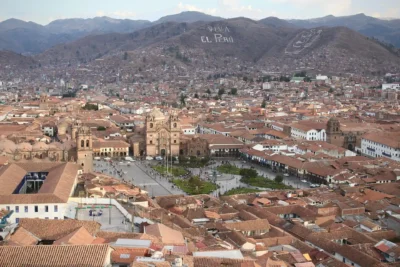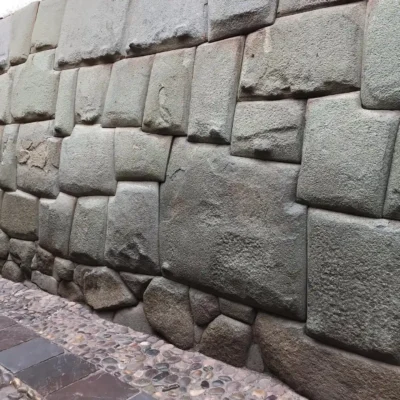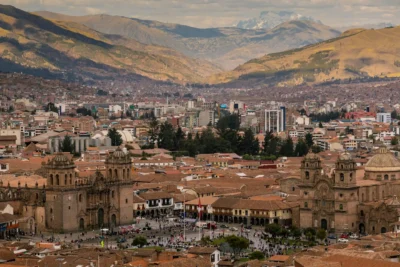Cusco Cathedral, recognized as one of the most emblematic monuments of the imperial city, is a masterpiece that blends history, art, and spirituality. This building, declared a UNESCO World Heritage Site, is the perfect place to start a journey through Cusco’s vast culture.
Here at Machu Picchu Wayna, you will find all the necessary information about its history, architecture, and tips for planning your visit.
History and Construction of Cusco Cathedral
Cusco Cathedral, officially known as the Basilica Cathedral of the Virgin of the Assumption, is one of the most important monuments in the city. Its construction, carried out between 1560 and 1664, was built on the foundations of the ancient Palace of Viracocha Inca, reflecting the cultural syncretism between the Andean worldview and Spanish colonial influence.
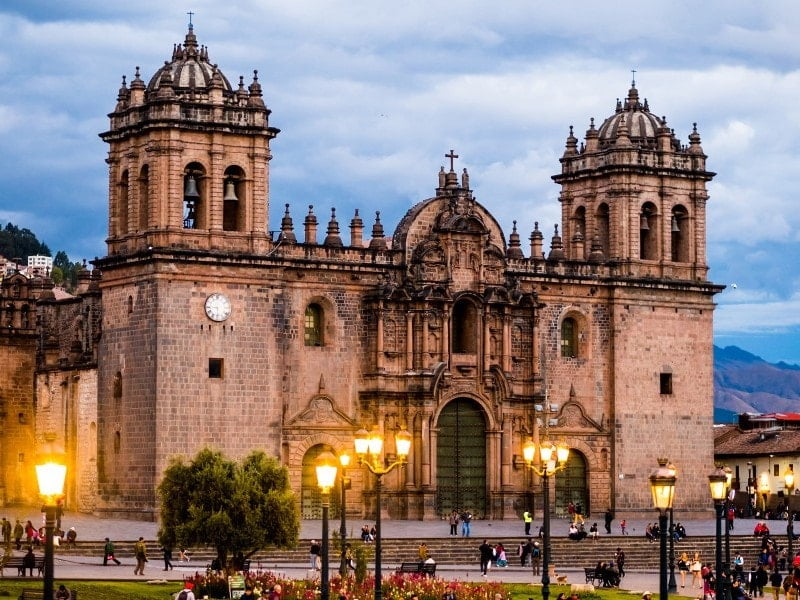
It combines architectural styles such as Renaissance, Gothic, and Baroque. Inside, the golden altarpieces, the silver main altar, and the revered image of the Lord of the Earthquakes stand out, a symbol of protection for Cusco’s people against earthquakes. Additionally, it houses a valuable collection of religious art from the Cusco School, which merges European and Andean elements.
The complex includes three main temples: the Temple of Triumph, the first Christian temple in Cusco; the Temple of the Holy Family, built in the 18th century; and the central nave, which constitutes the main cathedral. Declared a UNESCO World Heritage Site in 1983, the cathedral is a symbol of Cusco’s rich history, art, and spirituality.
Process and Architectural Style
The cathedral’s construction combined the forced labor of indigenous people and the region’s natural resources, such as andesite stone. The predominant architectural style is Renaissance, although Gothic and Baroque influences are also observed, making it a clear example of the mixture of styles from the colonial era.
Influence of Andean and Spanish Cultures
Cusco Cathedral is a testimony to cultural fusion. Its decorative elements include Andean symbolism intertwined with Christian iconography, showing how indigenous artisans adapted their traditions to represent the new religion.
Location of Cusco Cathedral
Where is it located?
The cathedral is located in Cusco’s Plaza de Armas, in the heart of the historic center. This lively area, surrounded by history, is a key tourist spot.
How to Get to Cusco Cathedral
From any point in the historic center, you can walk to the cathedral. If you are in farther areas, such as San Blas or Wanchaq, you can take a taxi or public transportation. The square is easily accessible and well signposted.
Structure and Architecture of Cusco Cathedral
Main Divisions of the Cathedral
The cathedral consists of three main structures:
- The Main Church, which houses the main altar and the choir.
- The Church of Triumph, the first Christian church built in Cusco.
- The Church of the Holy Family, known for its Baroque architecture and ornamental details.
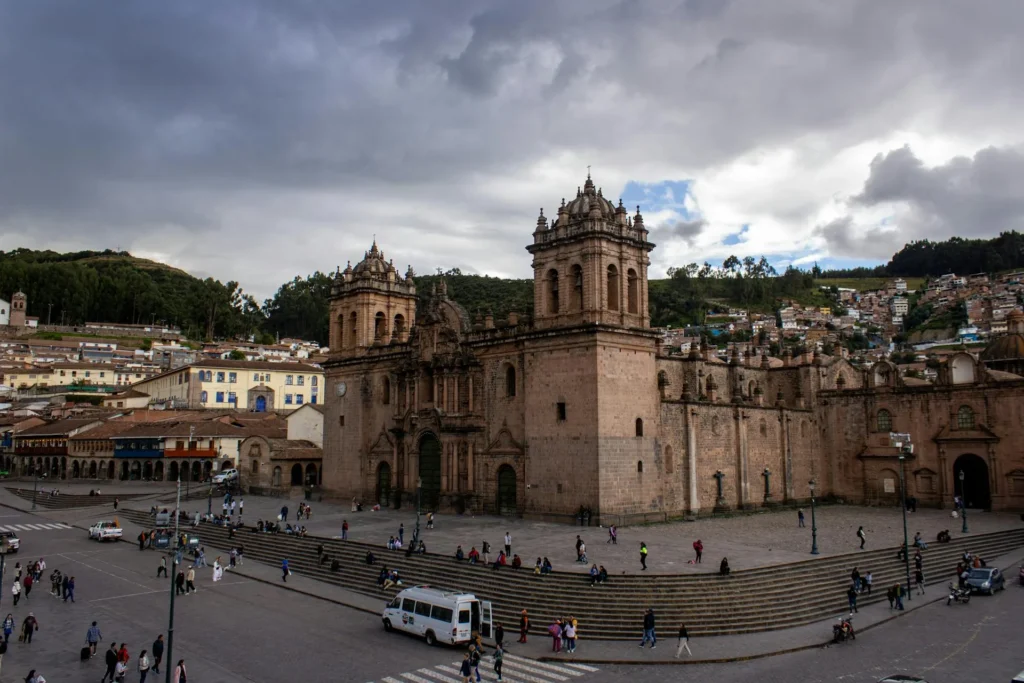
Architectural Style: Influences and Design
The cathedral’s design stands out for its blend of styles. European Renaissance is evident on its façade, while Baroque and Gothic enrich the interior details, such as altars and altarpieces.
Notable Structural Elements
- Columns and arches: Examples of the architectural refinement of the colonial era.
- Twin towers: Symbolize the strength and authority of the church in the Viceroyalty of Peru.
Attractions and Highlights of Cusco Cathedral
The Main Church
The heart of the cathedral is its main nave, where the silver-covered main altar is located. This space is ideal for appreciating the proportions and grandeur of the building.
Altars and Retablos: Masterpieces of Religious Art
Inside the cathedral, there are more than 10 altars decorated with gold, silver, and precious stones. Highlights include:
- The altar dedicated to Our Lady of the Assumption.
- The Baroque altarpiece of the Church of Triumph.
Nearby Churches: Adjacent Temples and Monuments
Near the cathedral, you can visit other historic temples, such as the Church of the Society of Jesus, famous for its Baroque design.
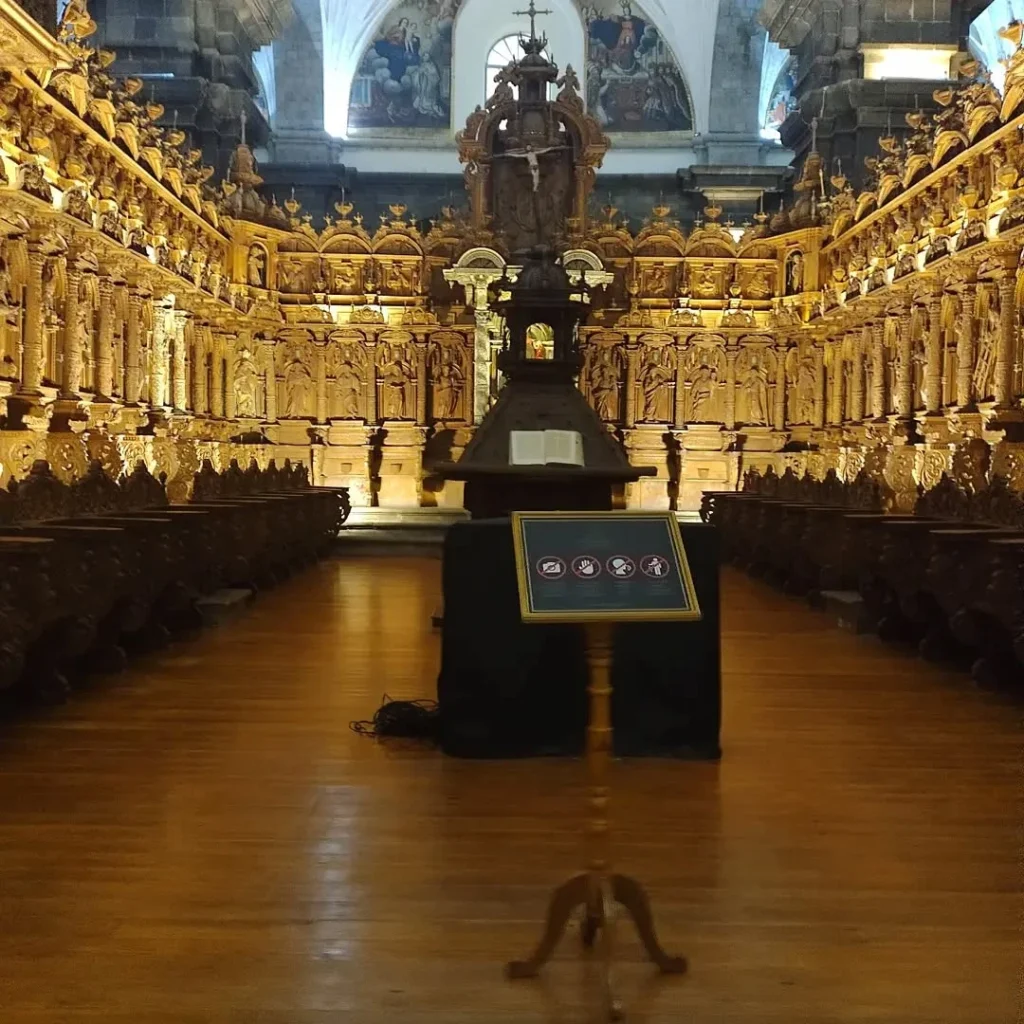
Main Features and Attributes of Cusco Cathedral
Artistic and Decorative Details
- Cusco School Paintings: More than 400 works of art adorn the walls, including the famous Andean version of “The Last Supper,” which features a guinea pig as the main dish.
- Wood carvings: The choir and confessionals are exceptional examples of indigenous craftsmanship.
The Choir and Its Wooden Carvings
The cathedral’s choir is carved in cedar and stands out for its complexity and detail. Each figure represents a saint or religious figure, making it one of the most admired pieces.
The Painting of the “Lord of the Earthquakes”
This image is one of the most revered by the people of Cusco. It is said that the Lord of the Earthquakes protected the city during the 1650 earthquake, cementing his place in local faith.
Visiting Hours and Entry Fees
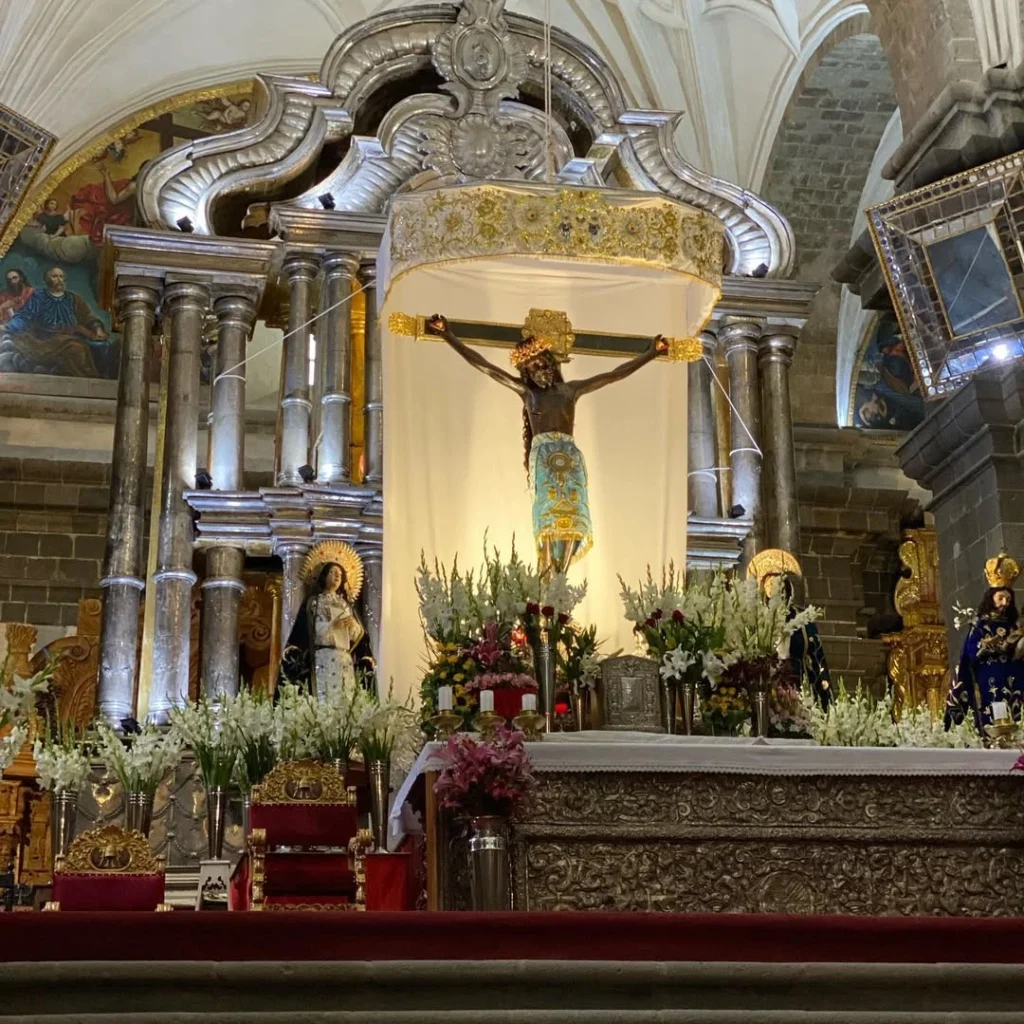
Available Hours for Tourists
The cathedral is open to the public from Monday to Saturday, generally between 10:00 a.m. and 6:00 p.m. It is recommended to arrive early to enjoy a quieter visit.
Entry Fees and Discounts
The entry fees are as follows:
- Foreign adults: 40 Peruvian soles (approximately 12 USD).
- Foreign children: 20 Peruvian soles (approximately 6 USD).
- Foreign students (with ISIC card): 20 Peruvian soles (approximately 6 USD).
It is worth noting that the entrance fee is included in the Cusco Tourist Ticket, which grants access to various historical sites and museums in the city.
Tips to Make the Most of Your Visit
- Buy your ticket in advance: If possible, purchase your ticket or the Cusco Tourist Ticket ahead of time to avoid long lines and ensure access to other important sites in the city.
- Arrive early or in the afternoon: To avoid tourist crowds, try to visit the cathedral early in the morning or near closing time when visits are usually quieter.
- Respect the site’s rules: Remember that photography or video recording inside the cathedral is prohibited, as well as touching the artworks. Maintain a low voice and respect the religious atmosphere of the place.
- Visit with a guide: This will help you better understand the cathedral’s history and details.
